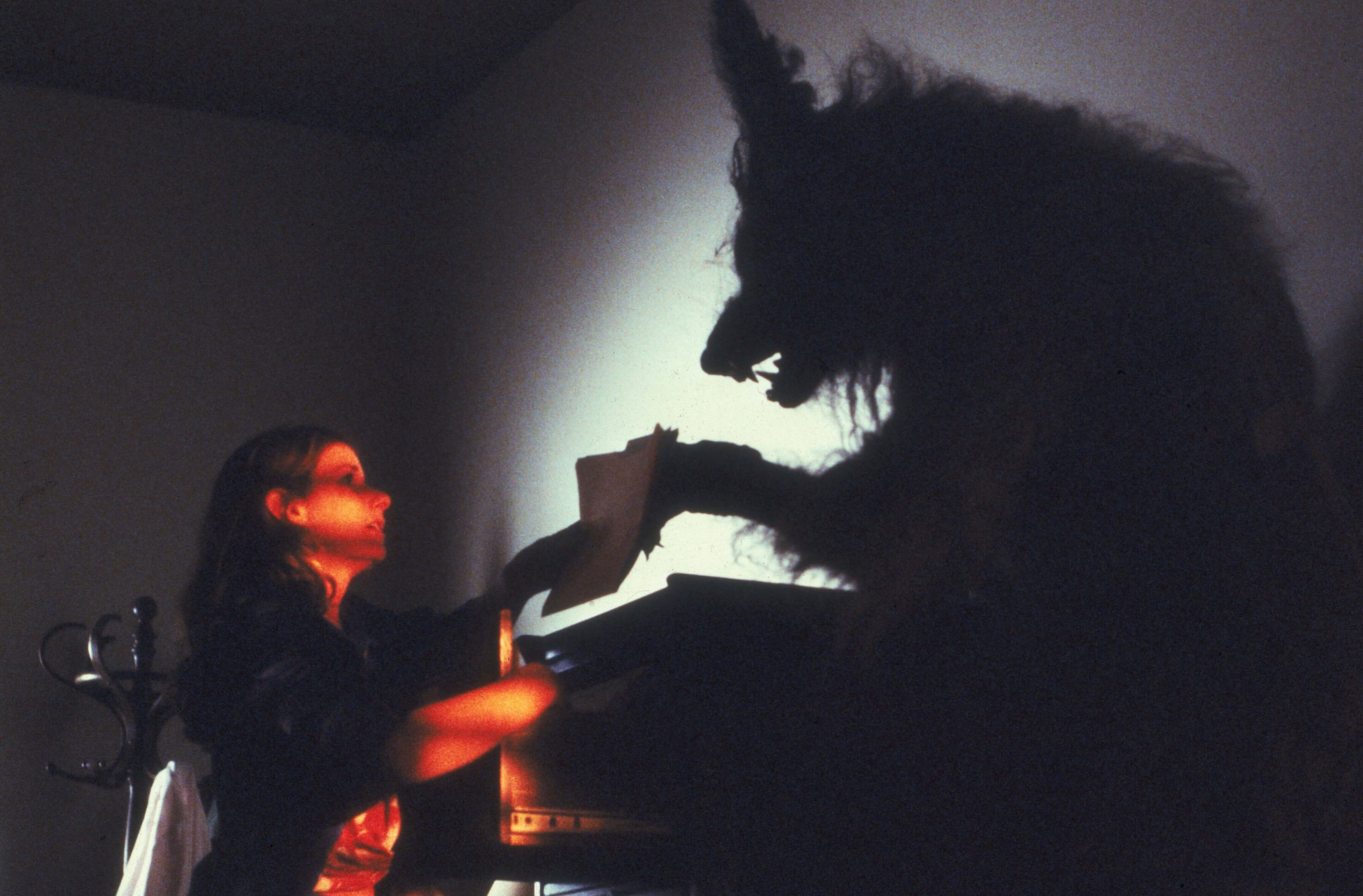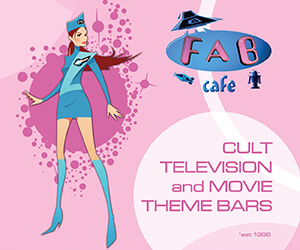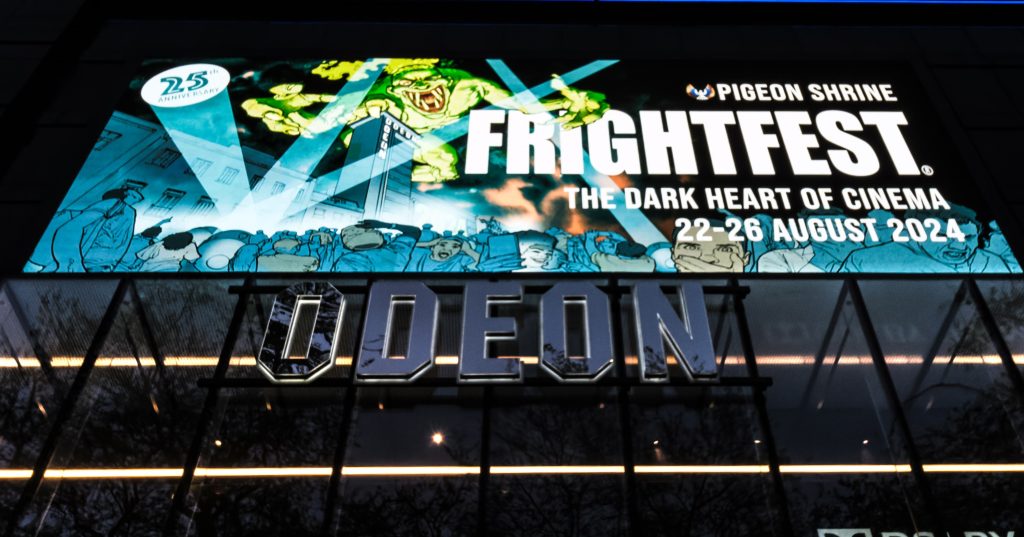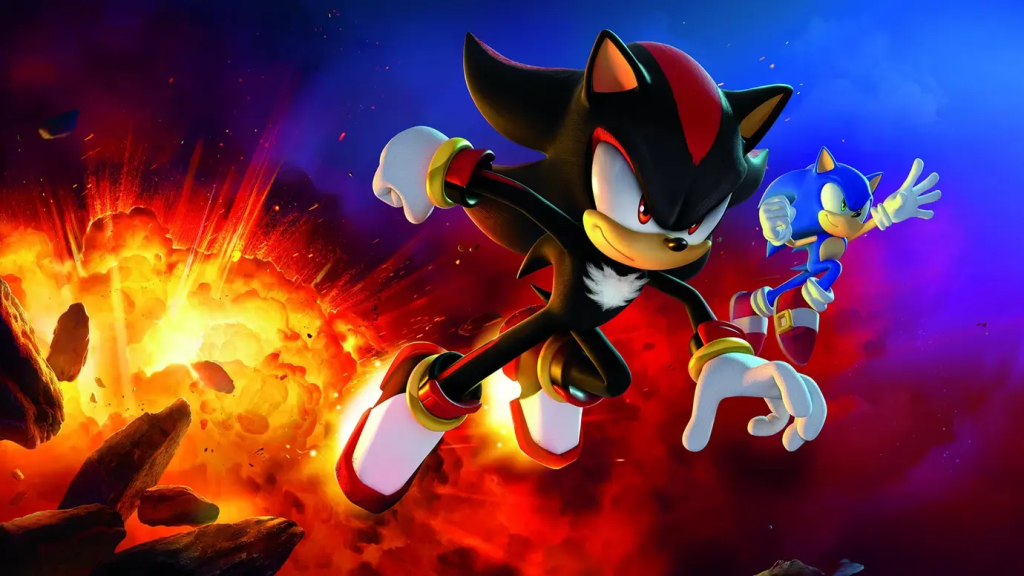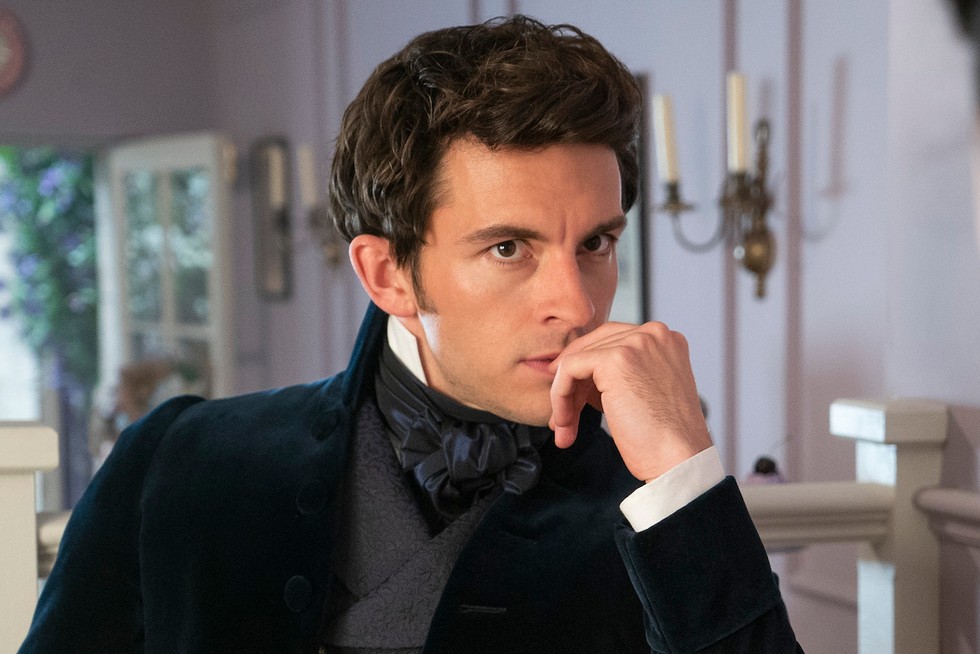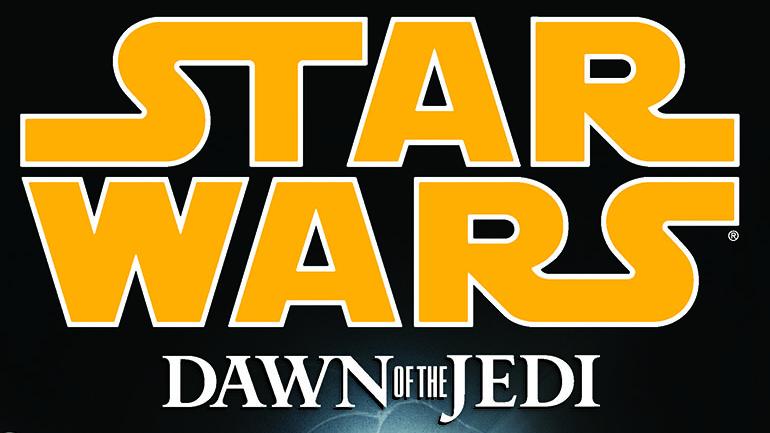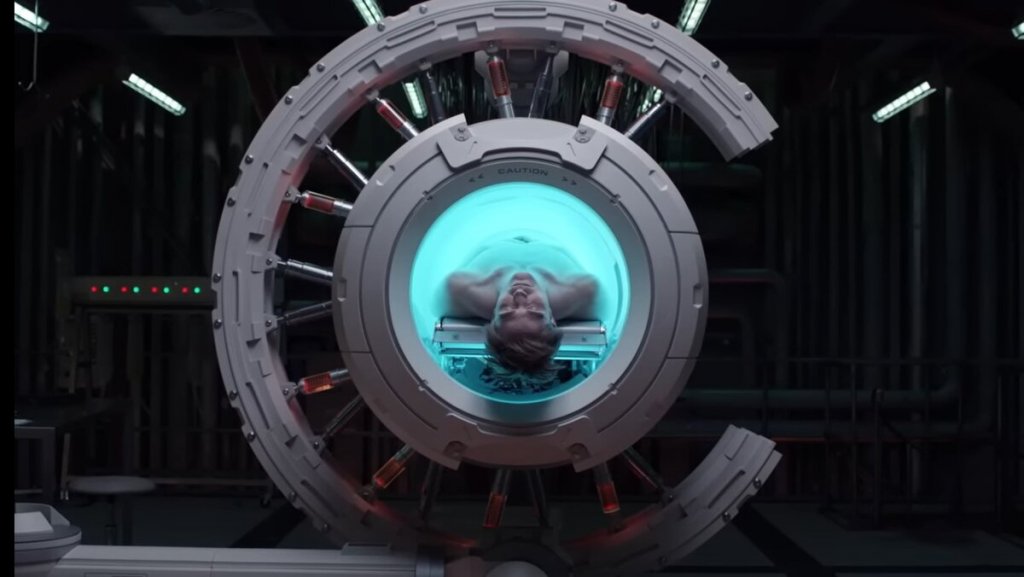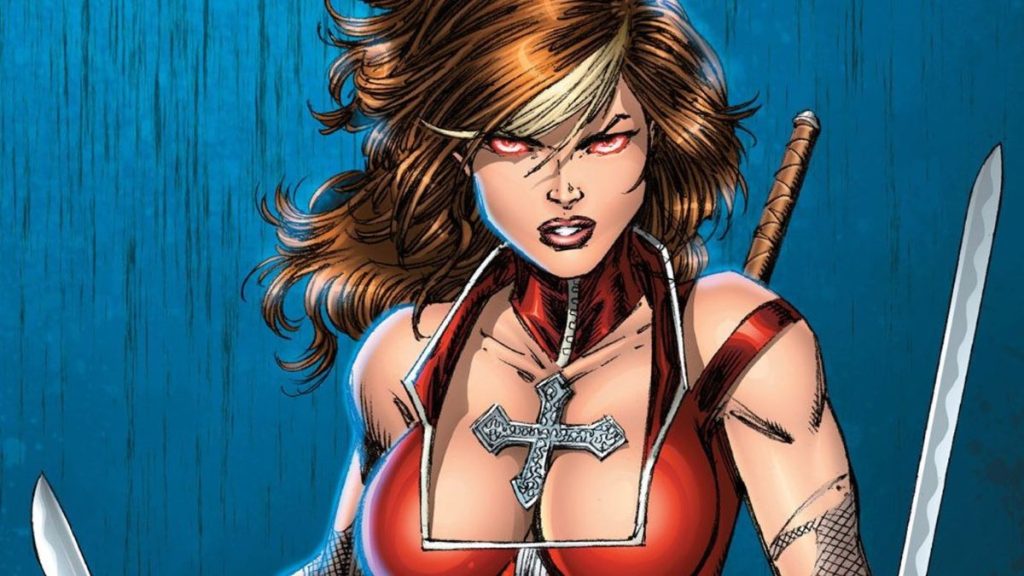Cinematic horror underwent another leap forward in the 1970s and ‘80s. It wasn’t the first time that whatever made horror films great had altered, reflecting the moods, anxieties and changes taking place in the society around us. The birth of scary cinema in black and white horror eventually gave way to the vivid and much gorier full-colour horror of studios like Hammer. In the ‘70s, the changes included more realistic bloodletting, increased sex and violence, and in films like The Exorcist, an attempt to ground the terror in a more recognisable, real-feeling world. Vampires and werewolves had been horror movie standards since the beginning, but they too changed. From Lugosi’s Dracula to Christopher Lee’s more animalistic, brutal Count and from Lon Chaney Jr.’s cursed Larry Talbot to Oliver Reed’s similarly stricken Leon in Hammer’s The Curse of the Werewolf.
Still, these films were essentially riffs on the same classic texts and inspirations. As special effects became more elaborate and convincing, and films became even more explicit, these two horror tropes underwent their biggest change. Inspired by more recent literature and events in the world, vampires became less straight-ahead evil and more ambiguous, the link between sex, death and desire explored more. Films like George A. Romero’s Martin and Tony Scott’s The Hunger presented a more sophisticated and nuanced approach. Though never as beguiling as screen vampires, and usually much more tragic, werewolves too followed this development. The two main films that bridged the banks between the classic style and the modern are inarguably An American Werewolf in London and The Howling. The Howling is often rated as the lesser movie when compared to Landis’ masterpiece. However, taken on its own terms, Joe Dante’s film is actually just as valid an example one can refer to when considering how werewolf films updated to become a truly modern horror.
The Howling follows investigative local LA news reporter Karen (an excellent performance by Dee Wallace). Karen is being stalked by the mysterious serial murderer Eddie and in hopes of catching him, Karen puts herself forward as bait. The set-up goes badly wrong and in trying to recover, Karen goes to therapist Patrick Macnee’s ‘colony’ retreat. The colony is full of oddballs and a series of unsettling events suggest it could be at the centre of everything that has been happening to Karen and the stage is set for a grisly fight for survival. Dante’s film ponders notions of the nature of humans, the beast within and hidden desires. It does all this whilst giving you all the werewolf action you could want in a film, a number of great performances, and lots of love for the films that inspired Dante to become a director. Dante knows his genre well having grown up immersed in horror (indeed having written on the subject himself as a fan) and references it throughout. The Howling is lovingly stuffed with in-jokes from character names to cameos by those linked with the genre. But from the porn-culture settings and Dante’s confidence in letting Rob Bottin’s graphic, visceral transformations take centre stage instead of hiding in the shadows, it’s very much a film of its (then modern) time. A satirical, self-knowing script worked on by John Sayles helps it be horror, media satire and even subtle comedy. The Howling still holds up very well today, and a legacy of disappointing (or just totally bonkers, if you count The Howling 2) sequels have done nothing to diminish Dante’s achievement.
Both Landis and Dante made films that rewrote and changed forever the way werewolves are presented. Previously, a guy in wolf-man make-up had been the way in which the creatures had made it to the screen. Chaney’s Talbot might not be a normal man anymore, but he’s still recognisably human. Thanks to the advances in effects work, the werewolves in The Howling are much more animal, and whilst retaining a human intelligence, no one would mistake them for a man or a woman. A directly descended approach to werewolf movies can be found in the other three films we cover here. Let’s start with one film that has a transformation sequence that is infamous in its own way. After all, are there many films that show the hero’s penis getting significantly, violently hairier?
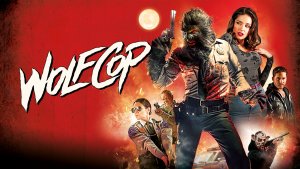
Writer-director Lowell Dean’s horror-comedy Wolfcop made waves in genre circles for a couple of main reasons back in 2014. Firstly, the attention-grabbing retro poster for the film. Next was the movie’s proclaimed reliance on practical effects for the transformations. It tells the tale of cop Lou Garou (arf… or more accurately groan – loup-garou is French for werewolf), an alcoholic policeman working in the small rural town of Woodhaven. When Lou is sent to respond to reports of a satanic ritual taking place on the outskirts of the town, he interrupts a ceremony of sacrifice and is knocked out. Coming to, Lou finds a pentagram carved on his stomach and no memory of how he got home. Soon after this, Garou’s senses become painfully sharp and an encounter in a bar with some locals ends badly for them and bloodily for the newly lycanthropic Lou. From this point on, Wolfcop takes in shapeshifters, conspiracies and a number of gory set-pieces. It does this with tongue wedged ruthlessly into cheek, becoming increasingly absurd as it goes on. All of which can be exemplified by a ludicrous, soft-focus love scene between the changed Lou and a barmaid. Wolfcop is not meant to be taken remotely seriously. As such, it doesn’t really matter that the film is not really very good. Being good or bad or notions of quality are something Dean’s film is completely indifferent to. It instead simply wants to tell a very silly story with no pretences at high art, but rather make its audience laugh, roll their eyes, enjoy the effects work, and at the end be none the wiser for the experience. It is willfully dumb fun and all the more enjoyable for it. And if you like it, a sequel (Another Wolfcop) has recently been released, too.
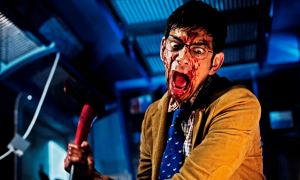
Next is a much more serious 2015 British film from director Paul Hyett, Howl, that seeks to combine the ‘Die Hard on a…’ approach of innumerable movies with the werewolf horror. Ed Speleers is Joe, a train guard who starts the film with his hopes of promotion dashed. Added to that he’s forced into pulling a double-shift on the last train of the evening from Waterloo. Forced, but also convinced by the presence of refreshment trolley girl Ellen, his crush. Joe’s night gets worse still when he strikes out with Ellen and a thoroughly miserable rest of the shift looms, which won’t be enlivened by the gaggle of passengers the train is carrying. There’s also a storm brewing across the country. An hour or so out of London the train enters a mobile dead-spot. It’s here where the train runs over a deer and grinds to a halt. Driver Sean Pertwee (a nod here to his role in Brit werewolf classic Dog Soldiers and Hyett’s previous work on effects for that film’s director Neil Marshall on a number of projects) gets off to check the situation out and promptly disappears, killed off by something lurking in the woods. A reluctant Joe has to take charge of the situation as best he can and keep the passengers safe until help can arrive. But with at least one werewolf stalking the train, keeping safe is out of the question – instead, it’s about keeping breathing.
Aside from the fact British viewers will immediately ruffle at the necessary artifice of a train nobody would travel on in this country, there’s plenty to recommend in Howl. The usual small group of diverse passengers (or more accurately potential werewolf chow) is assembled and in amongst them, you have some fine actors. You have the likes of Duncan Preston (who those of a certain age will know as Kevin’s dad from Harry Enfield fame) and Elliot Cowan, along with a solid and relatable cast. The single central location and focus on telling a straightforward, simple and effective story is commendable. Hyett is not trying to reinvent horror films here. Howl is a low-budget horror flick with nothing above B-movie aspirations and it’s all the better for it, clipping along to its conclusion in less than 90 minutes. That doesn’t mean it’s unambitious either, with the script toying around with notions of masculinity and how men and women interact. The werewolves are mostly practical FX work here too which adds an old-school charm to the film. As a made-for-pennies British horror, it’s happily an easy film to like and support.
Our final werewolf film to consider is Adrián García Bogliano’s Late Phases from 2014. It’s very much different to both Wolfcop and Howl. As much a drama about central character Ambrose’s twilight years and difficult relationship with his despairing son Will as a horror film, it tries to do something different and generally succeeds. Ambrose is played by Nick Damici with a steely, implacable stillness. He’s a veteran and also blind and the film begins with Will moving him to a retirement community next to some woods. Ambrose is fiercely independent and describes the gated estate as somewhere people ‘go to die’. He is more right about that than he could expect. Along with his seeing-eye dog, Ambrose doesn’t exactly endear himself to the majority of his religious neighbours. He does get on well with immediate next-door neighbour Delores but on the first night there this new friendship is brutally ended early by a werewolf attack that leaves Delores dead and Ambrose and his dog injured. Ambrose is told by police that there are frequent animal attacks due to the community’s proximity to the woods and it’s written off as just such a thing. But Ambrose already suspects a werewolf was responsible and when his dog dies, he resolves to be ready when the next full moon happens. Before then, Ambrose tries to do a little detective work in trying to figure out who the werewolf might be. Suspects include the local pastor Father Smith and pretty much anyone else Ambrose comes into contact with.
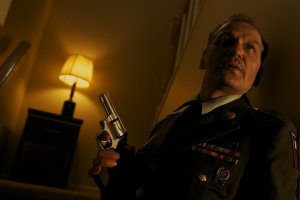
Late Phases operates fully as a drama that follows Ambrose’s slow realisation the walls he built around himself between him and his wife, son and anyone else who might care for him, have not worked. It’s a contemplative film that muses on mortality, family and how the things we believe define us are sometimes the things that destroy us. Bogliano’s film also operates fully as a horror film, and much like The Howling, puts its werewolves front and centre. There’s a reliance here too on practical effects and gory set-pieces. The cumulative result adeptly manages to have one foot in each genre without being jarring. There’s a lot of talent in front of and behind the camera that helps make this happen. Damici gives an excellent central performance and he’s ably supported by Ethan Embry as his fragile son. You also have familiar faces from film and television like Lance Guest and cult genre heroes in Larry Fessenden and the always-great Tom Noonan. Robert Kurtzman was brought in to do the special effects and his huge catalogue of experience really helps here. It’s a fine film and well worth catching. It also brings our set of four full circle. Late Phases is most like The Howling (though without the satirical edge), in so far as it’s a film that wants to use its story to ruminate on the human condition and how we’re often in a struggle with the animal within. Having said that, it also loves genre conventions and traditions and seeks to satisfy as a cathartic nightmare. And that’s probably what makes werewolf films so compelling. They figuratively and literally unleash the animal within us all and ultimately allow us to conquer it to some degree. In giving us that release, that confrontation with the monster inside, that base survival thrill, they are some of the purest horror experiences we can have.
These four films also demonstrate how the werewolf horror film has developed and changed. Wolfcop, Howl and Late Phases’ lycanthropic DNA can be traced directly back to Dante’s classic. What he achieved in The Howling, and what Landis achieved in American Werewolf, were part of forever changing the direction of horror movies in general, and werewolf movies specifically. Together they offer us a window into how these films have been inspired by and honoured their genre’s past while building a new template for horror to follow.
You can catch all four films while howling at the moon in February on Horror Channel. Sky 319, Virgin TV 149, Freeview 70, and Freesat 138.

